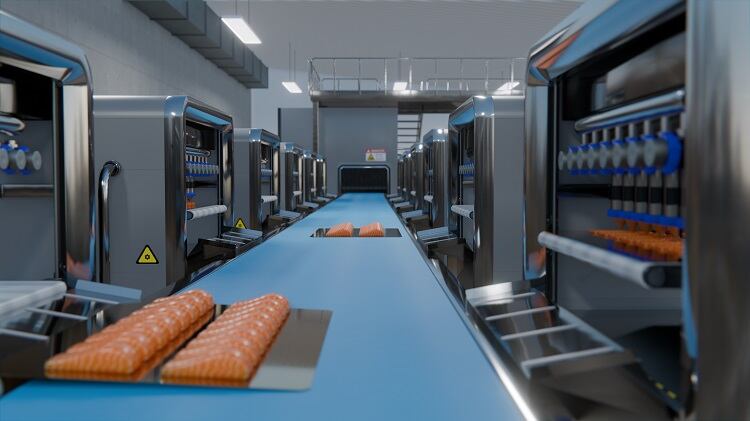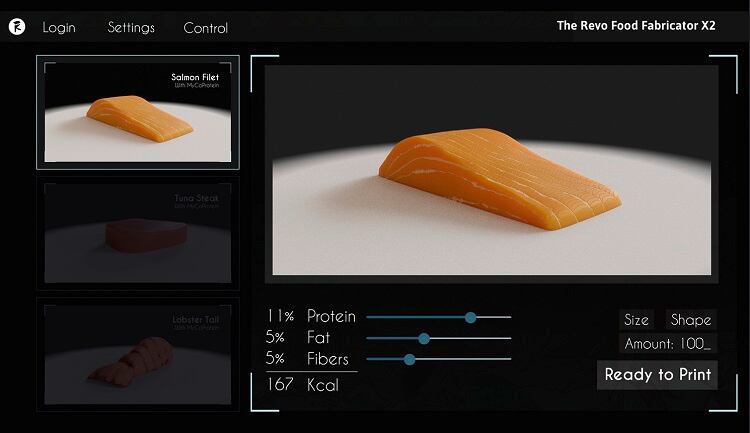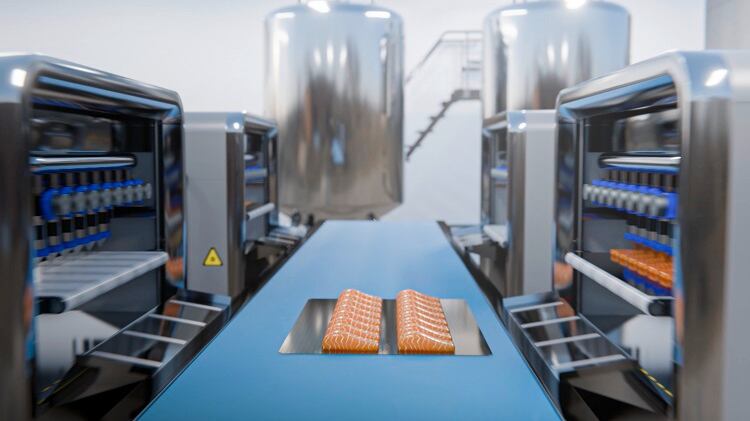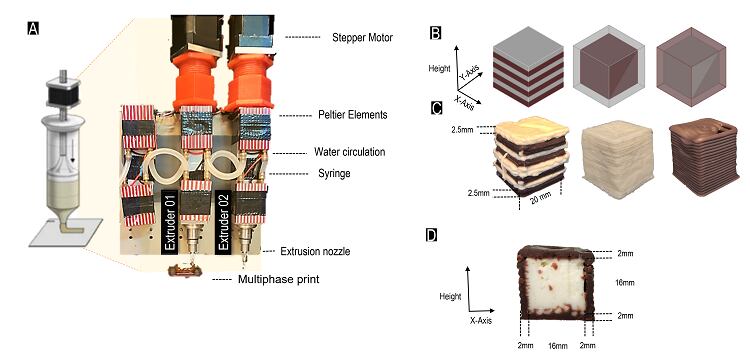3D printing has been described as the ‘tech of the future’. For Revo Foods, it is very much the tech of the present.
Revo produces mycoprotein meat and fish alternatives through 3D printing technology. Notably, it recently produced and released the ‘world’s first’ 3D-printed smoked salmon fillet last year.
Now, the company has announced a new printer, the ‘Food Fabricator X2’, which can customise shapes, structures and textures, and has a multi-nozzle system that can print multiple products at once.
Revo is also planning to upscale production with the money it hopes to raise from a planned release of digital shares to the public.
Continuous production
Revo’s new technology enables continuous meat analogue production which, the company says, is the first time mass production of such products has been possible with 3D printing.
The company’s printer is “a completely new production machinery to enable the structuring of complex, heterogeneous food items with 3D technologies. 3D Food Printing existed for a while, but we developed (and patented) some main components which now enable us to bring this technology to the industrial scale,” Revo Foods’ CEO Robin Simsa told FoodNavigator.
The company’s new extrusion print-head design, for example, enables a continuous flow of materials for the first time. Before this, a more labour-intensive batch process was the order of the day. “With this solution it is possible to work with huge material volumes without manual labour input. Obviously, this has a huge effect on the cost.”

Secondly, the multi-nozzle print head design can produce many products at the same time. “While dosing systems with multiple nozzles have already been in use in the food industry for decades, this is the first time that this system is being incorporated in a 3D food printing setup.”
Finally, a modular plug and play system connects the production machines. “This way, we can allow a modular scale-up of the production to take place, and digitally control the whole production in terms of different product types and designs. No more hardware changes are needed between different product types, which is another huge advantage.”
3D printing is particularly suited to ‘structured’ and ‘complex’ products such as whole cut filets and steaks, Simsa told us, as opposed to ‘non-structured’ products such as burgers and chicken nuggets. “3D Food Printing is essentially the controlled combination of two different food ingredients into new structures. Other technologies (e.g. extrusion) are uncontrolled, therefore better suited for non-structured products.
“When it comes to complex items, 3D Food Printing is the first technology that really allows the integration of a fat phase into the plant-protein fibre matrix, which is the key for these products to reach new sensory levels. In summary, both technologies can be used for different product applications, and 3D printing is more suitable for high-value, fully structured meat alternatives.”
Customising meat and seafood
While most well-known for its seafood alternatives, Revo Foods also produces meat alternatives. Simsa sees opportunities in both. Namely, that 3D printing will make products more customisable and more varied.
“There is a huge interest from big food producers for “mass customisation”, meaning the ability to produce small batches of individual products for individual customer groups, without necessarily leading to higher production costs.
“Right now, this is impossible, because all food machinery is built for massive scale of identical products, but we believe that with new technologies such as 3D food printing and the exciting new products that can be created like this, there is a new creative impulse for food product developers and the food industry as a whole on the way. Why not introduce some crazy new shapes and structures or combination of different ingredients which were before only possible in Michelin-star restaurants, but not as a consumer good in supermarkets? We believe that is a beautiful future to work towards.”
The main benefits of the tech, believes Simsa, are: its flexibility, as it can create many different types of products with a single machine; its controllability, being able to control the distribution of materials within a product; and creativity, no theoretical limits on the type of product that can be produced.

Revo’s products are, rather than being plant-based, mycoprotein-based instead. According to Simsa, this is down to three factors: health, taste, and consumer knowledge.
“Mycoprotein has a complete amino acid profile and a very clean taste. Also, consumers know about the benefits of fungi and mycoprotein, and so far we had a fantastic consumer reception based on this ingredients, and many people buying the product specifically for this reason. Also, we could achieve Nutri-Score “A” in our products thanks to the use of this ingredient,” he told us.
Investment, upscaling and diversification
After the release of its first product, ‘THE FILET – Inspired by Salmon’, in September last year, Revo is growing in confidence, and has announced plans to introduce digital shares to be bought by the public.
“We are now setting up everything for our next step in upscaling: A production plant with several tons of output, which we will realize until summer 2024 in Vienna, and start entering food retail on a meaningful level,” Simsa told FoodNavigator.
The company is also planning on expanding from just simple meat and seafood whole cuts to other products as well. “While we were exclusively focused on using our technology for meat alternatives in the beginning, we were contacted by multiple companies over the past years that are interested in using this technology for other product types (e.g. snacks, pasta or stuffed foods with crazy shapes or forms or personalized products). We believe there is a big value in enlarging our technological focus and offering our production technology to other food manufacturers as well, starting from the end of 2024.
“This way, we can ensure a new creative impulse for the alternative meat industry, but also for the wider food industry itself, enlarging our use-case also as a technology provider. Our goal is to become the leader in 3D manufacturing equipment for the food industry, which might be a niche business at the moment, but one that is bound to become very valuable as the possibilities of this technology become available to more producers.”



